Indoor plants have become a vital part of modern home décor and wellness, offering aesthetic beauty and improved air quality. Among them, Pothos (Epipremnum aureum), also known as Devil’s Ivy, is one of the most popular choices for indoor gardeners due to its hardy nature, trailing vines, and lush green or variegated leaves. Despite being low-maintenance, watering is a critical factor in keeping Pothos plants healthy. Too much water can lead to root rot, while too little can cause wilting and stunted growth. Understanding the right watering schedule is essential for thriving indoor Pothos plants.
Introduction to Pothos Care
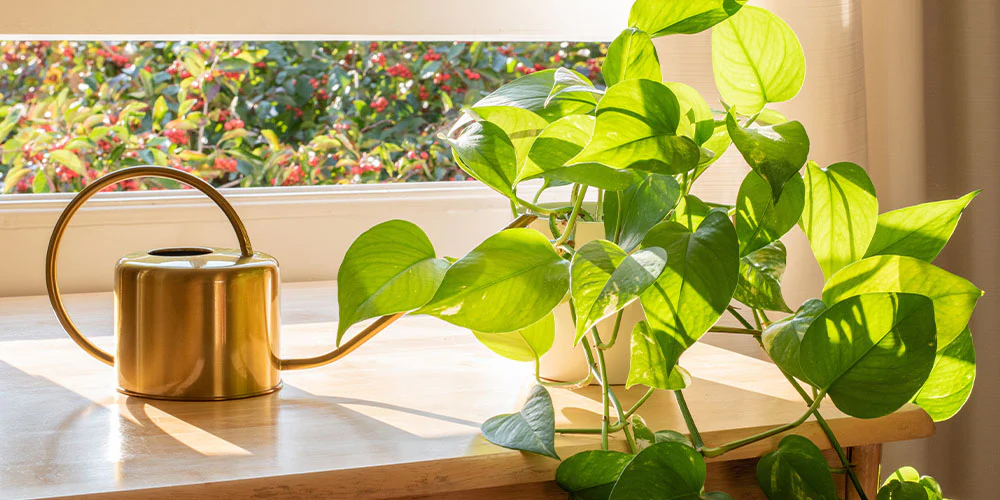
Pothos plants are native to Southeast Asia and are highly adaptable to various indoor conditions. They thrive in indirect sunlight, tolerate low light areas, and are forgiving of occasional neglect, making them ideal for beginner plant enthusiasts. However, their resilience should not be mistaken for a lack of watering needs. Proper hydration ensures vibrant foliage, strong growth, and a thriving root system.
Benefits of Pothos Plants:
- Aesthetic Appeal: Their trailing vines and glossy leaves add elegance to any interior.
- Air Purification: Pothos plants remove indoor pollutants such as formaldehyde and benzene.
- Low Maintenance: They require minimal care, making them perfect for busy individuals.
- Psychological Benefits: Indoor greenery reduces stress and enhances mood.
Factors Affecting Watering Needs
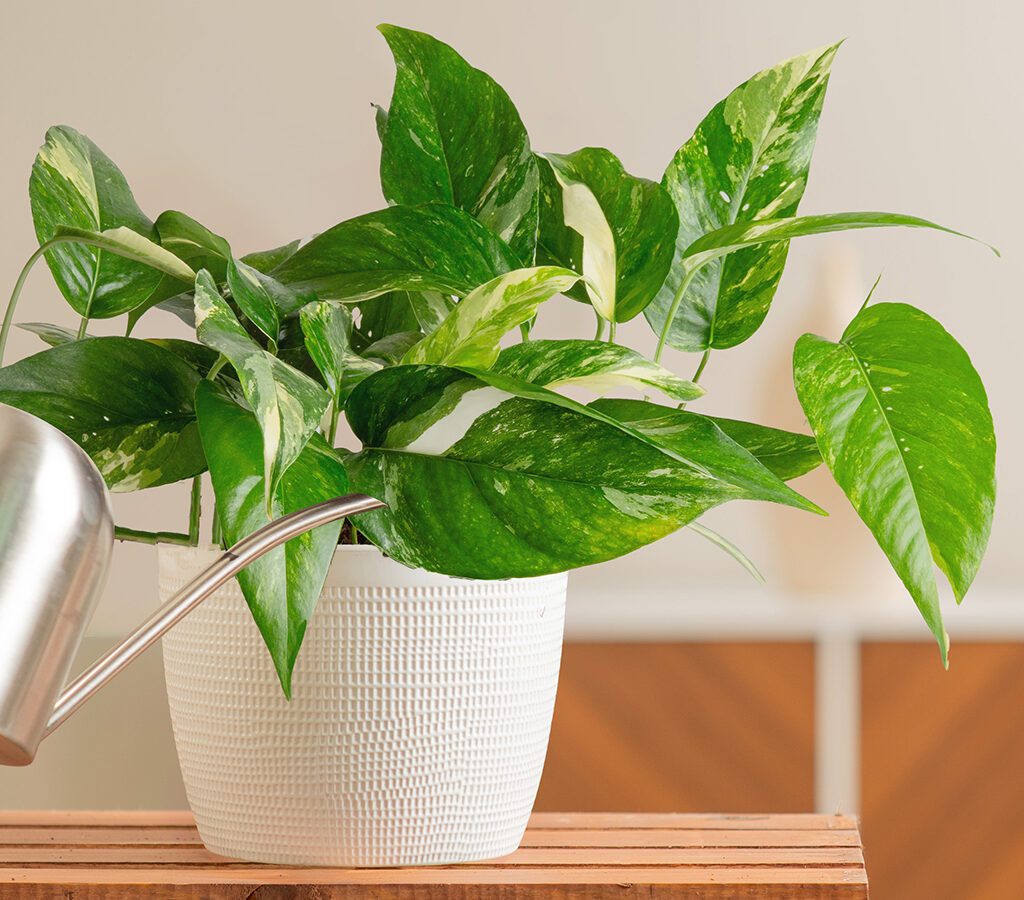
Several variables determine how often Pothos plants should be watered:
- Pot Size and Type:
- Smaller pots dry out faster and need more frequent watering.
- Pots with drainage holes prevent water accumulation, reducing root rot risk.
- Soil Composition:
- Well-draining soil is essential; mix potting soil with perlite or sand to enhance drainage.
- Heavy, compact soils retain water longer, increasing overwatering risks.
- Light Exposure:
- Plants in bright, indirect light require more water due to faster evaporation.
- Low-light conditions reduce water needs, and overwatering can be detrimental.
- Temperature and Humidity:
- Warm, dry environments increase transpiration and water demand.
- Cool, humid areas reduce watering frequency.
- Plant Age and Size:
- Young Pothos seedlings require consistent moisture to establish roots.
- Mature plants are more drought-tolerant but still need regular watering for optimal growth.
General Watering Guidelines for Pothos Plants
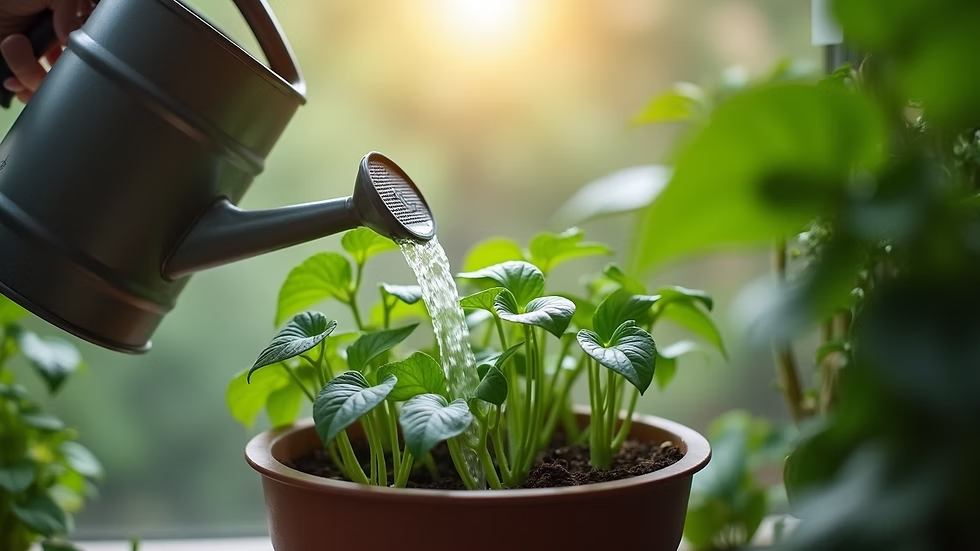
The key to a healthy Pothos is allowing the soil to partially dry out between waterings:
- Check Soil Moisture: Insert your finger 1–2 inches into the soil. Water only if it feels dry.
- Watering Frequency: Typically, Pothos plants thrive when watered every 7–10 days, but this varies based on environmental conditions.
- Water Thoroughly: Water until it drains from the bottom of the pot, ensuring the entire root ball is hydrated. Avoid letting the plant sit in standing water.
Signs Your Pothos Needs Water
Observing the plant and soil is the most reliable way to determine watering needs:
- Wilting or Drooping Leaves: Indicates the plant is thirsty.
- Dry Soil: Soil pulling away from the edges of the pot is a clear signal.
- Slow Growth: Prolonged dryness can stunt vine and leaf development.
- Curling Leaves: Leaves may curl inward when the plant lacks water.
Signs of Overwatering
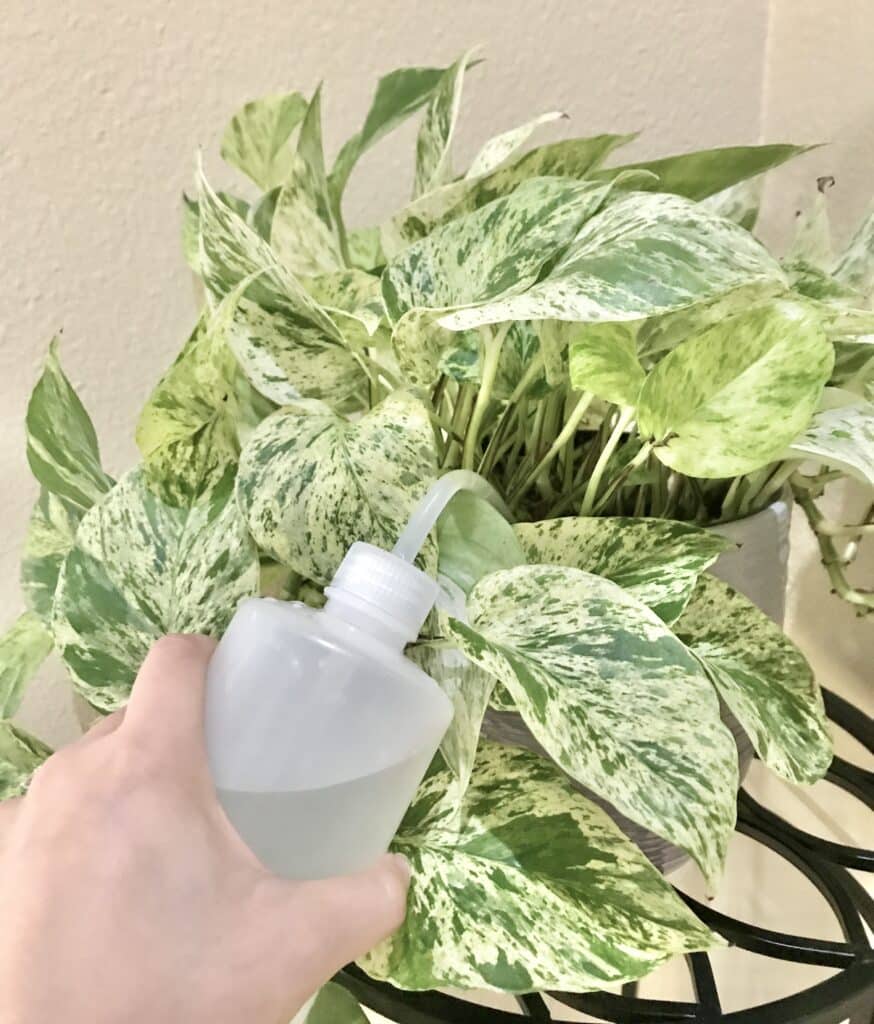
Overwatering is the most common issue leading to root rot in Pothos plants:
- Yellowing Leaves: Especially lower leaves turning yellow.
- Mushy Stems or Roots: Roots may appear brown or black and feel soft.
- Leaf Drop: Leaves may fall even if soil is wet.
- Fungal Growth: Overly wet soil can lead to fungal infections like root rot or stem rot.
Always allow soil to dry partially and ensure pots have proper drainage to avoid these issues.
Optimal Watering Schedule by Plant Stage
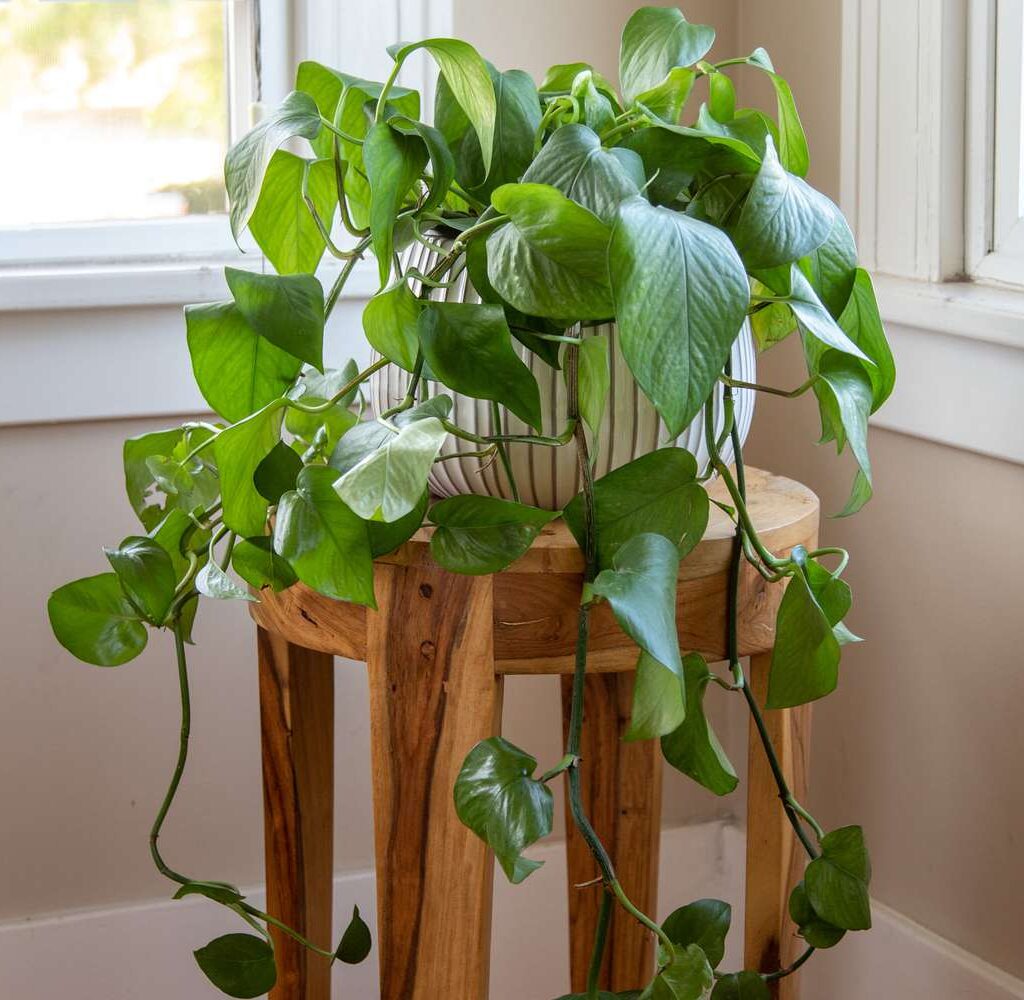
- Young Pothos (Seedlings):
Water every 5–7 days during the growing season, keeping the soil consistently moist but not soggy. Young roots need moisture to establish a strong foundation. - Mature Pothos Plants:
Water every 7–10 days, adjusting for indoor temperature, light, and humidity. Mature plants can tolerate brief dry periods, which also reduces the risk of root rot. - During Summer:
Increase watering slightly due to faster evaporation and higher growth rates. Ensure soil is checked before watering to avoid overwatering. - During Winter:
Reduce watering to every 2–3 weeks, as the plant’s growth slows and water absorption decreases.
Advanced Techniques to Maintain Proper Hydration
- Bottom Watering: Place the pot in a shallow tray of water and allow roots to absorb moisture gradually. This prevents overwatering and encourages deep root growth.
- Use of Moisture Meters: Soil moisture sensors provide an accurate indication of when your Pothos needs water.
- Humidity Maintenance: Pothos thrives in 40–60% humidity. Misting or using a humidifier can reduce the frequency of watering.
- Proper Drainage and Soil Mix: Using well-draining soil mixed with perlite, orchid bark, or sand prevents water accumulation.
- Adjusting Watering by Growth Stage:
- Rapid Vine Growth: Slightly more water to support new leaf production.
- Dormancy or Slow Growth: Less water to prevent root rot.
Benefits of Correct Watering
- Vibrant Foliage: Proper hydration keeps leaves glossy and healthy.
- Root Health: Reduces the risk of root rot and supports strong root development.
- Consistent Growth: Ensures steady vine and leaf expansion.
- Aesthetic Appeal: Healthy Pothos plants enhance interior décor and overall ambiance.
- Air Purification: Well-watered plants perform better at filtering indoor pollutants.
Common Watering Mistakes
- Overwatering: The most frequent issue leading to yellowing leaves and root rot.
- Strict Scheduling: Following a rigid schedule without checking soil moisture can harm the plant.
- Ignoring Seasonal Variations: Watering the same amount in winter as in summer can cause waterlogging.
- Poor Drainage: Using non-draining pots or compacted soil increases root rot risk.
- Neglecting Environmental Factors: Light, temperature, and humidity must guide watering frequency.
Conclusion
Pothos plants are resilient, low-maintenance indoor plants, but their health and vitality rely heavily on proper watering practices. The best approach is to allow the soil to partially dry between waterings while ensuring the plant receives enough hydration to support leaf and vine growth. Young plants need slightly more frequent watering to establish roots, whereas mature plants require less frequent but deeper watering. Seasonal adjustments are crucial, with increased watering during active growth and reduced watering in dormant periods.
Preventing overwatering and root rot is vital to maintaining lush, glossy foliage and vibrant vines. By monitoring soil moisture, observing plant cues, using proper soil, and selecting pots with drainage, growers can ensure thriving Pothos plants that purify the air, enhance interior décor, and provide long-term enjoyment.
In short: water wisely, check soil moisture, avoid standing water, and your indoor Pothos will flourish, bringing beauty and freshness to your home environment.
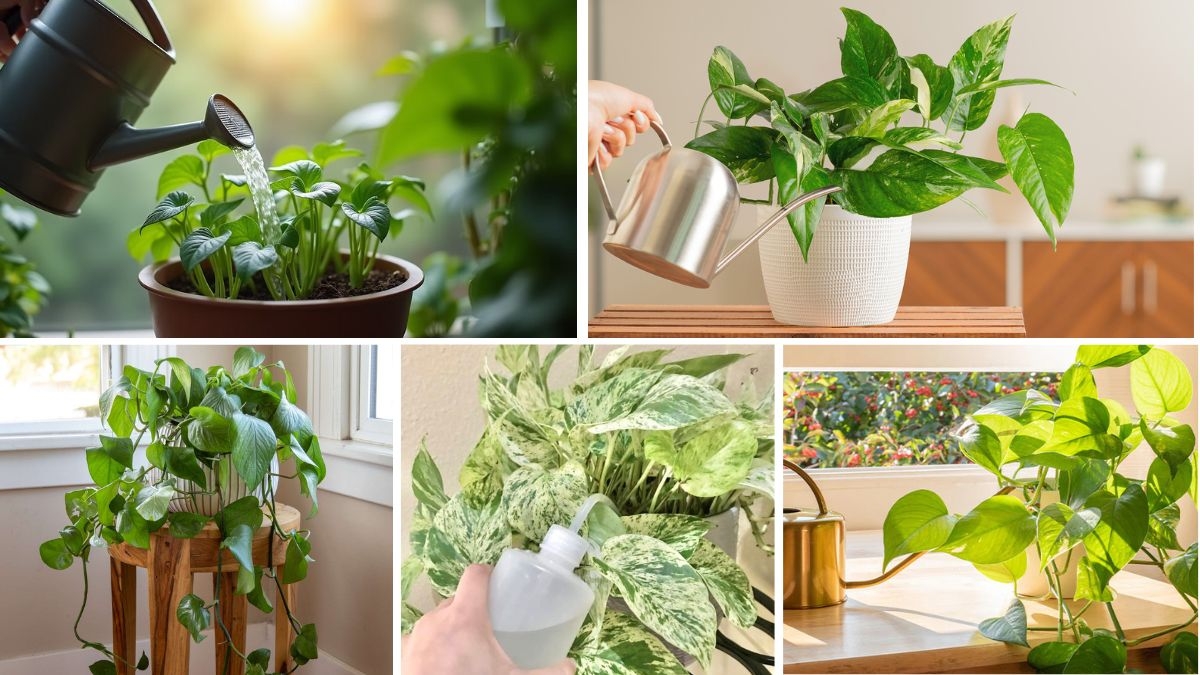



Leave A Comment